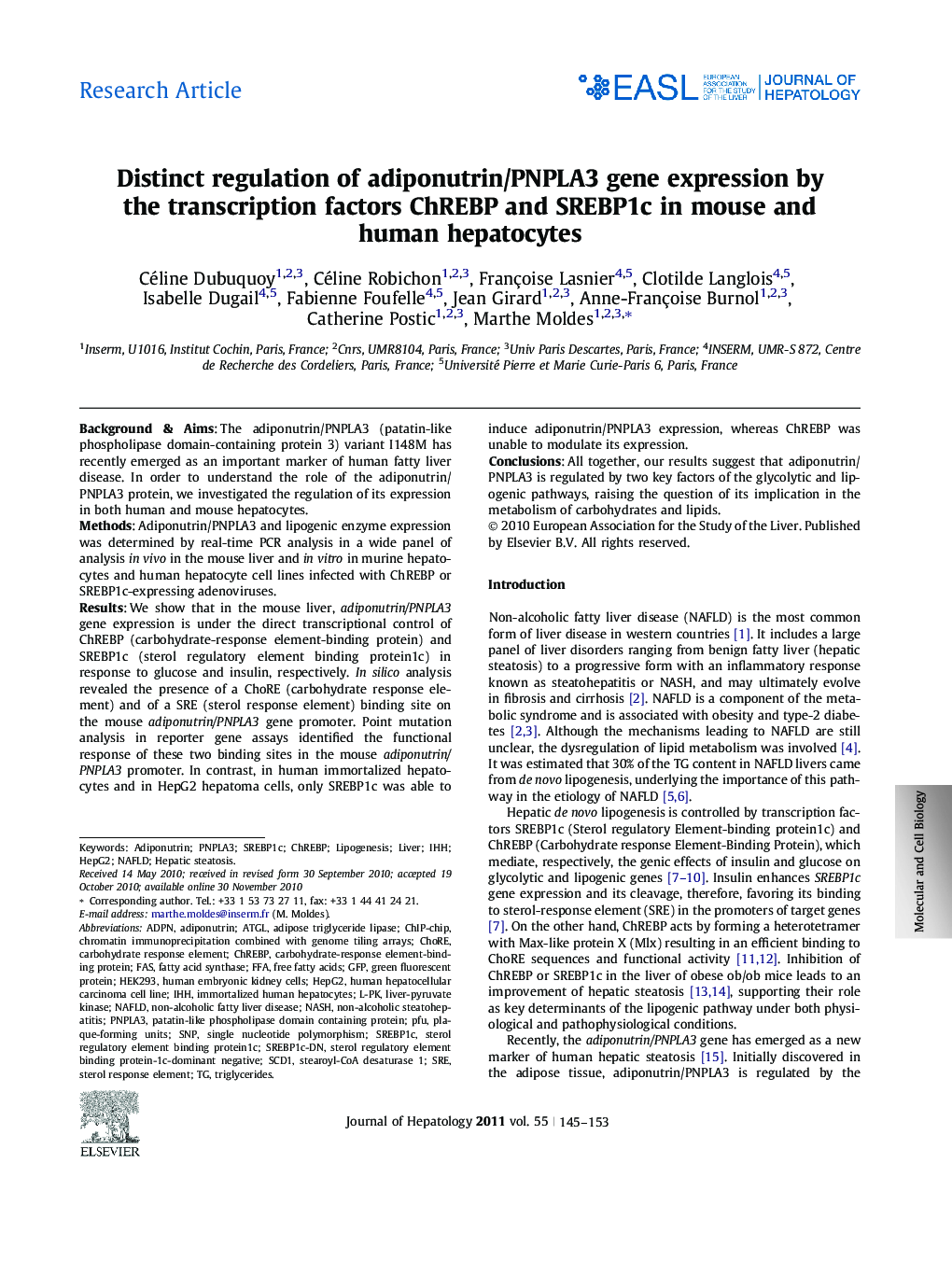| Article ID | Journal | Published Year | Pages | File Type |
|---|---|---|---|---|
| 6108716 | Journal of Hepatology | 2011 | 9 Pages |
Background & AimsThe adiponutrin/PNPLA3 (patatin-like phospholipase domain-containing protein 3) variant I148M has recently emerged as an important marker of human fatty liver disease. In order to understand the role of the adiponutrin/PNPLA3 protein, we investigated the regulation of its expression in both human and mouse hepatocytes.MethodsAdiponutrin/PNPLA3 and lipogenic enzyme expression was determined by real-time PCR analysis in a wide panel of analysis in vivo in the mouse liver and in vitro in murine hepatocytes and human hepatocyte cell lines infected with ChREBP or SREBP1c-expressing adenoviruses.ResultsWe show that in the mouse liver, adiponutrin/PNPLA3 gene expression is under the direct transcriptional control of ChREBP (carbohydrate-response element-binding protein) and SREBP1c (sterol regulatory element binding protein1c) in response to glucose and insulin, respectively. In silico analysis revealed the presence of a ChoRE (carbohydrate response element) and of a SRE (sterol response element) binding site on the mouse adiponutrin/PNPLA3 gene promoter. Point mutation analysis in reporter gene assays identified the functional response of these two binding sites in the mouse adiponutrin/PNPLA3 promoter. In contrast, in human immortalized hepatocytes and in HepG2 hepatoma cells, only SREBP1c was able to induce adiponutrin/PNPLA3 expression, whereas ChREBP was unable to modulate its expression.ConclusionsAll together, our results suggest that adiponutrin/PNPLA3 is regulated by two key factors of the glycolytic and lipogenic pathways, raising the question of its implication in the metabolism of carbohydrates and lipids.
